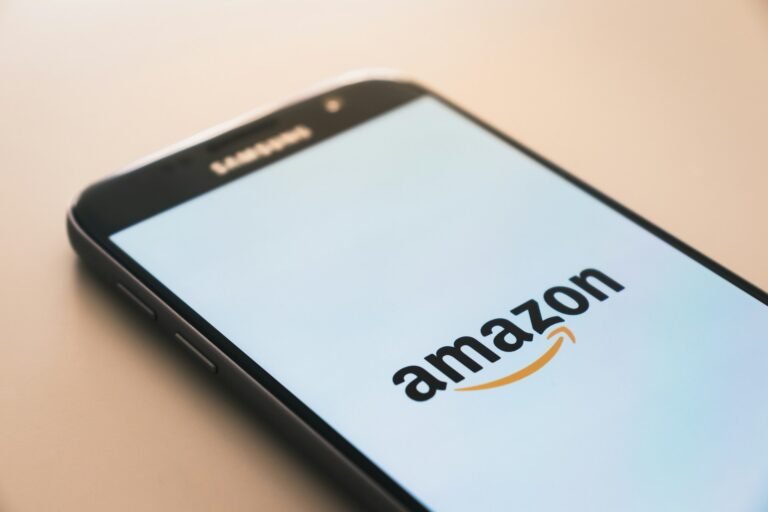
Your Ultimate Guide to Profit and Growth Strategies with Amazon Business Models 2024
Table of Contents
Introduction
Independent sellers, not Amazon itself, currently account for 60% of all sales on the platform. A big part of Amazon’s success is that it gives merchants the freedom to choose how they want to sell.
Six primary approaches exist for sellers to conduct business on Amazon, according to a poll that questioned over 2,600 Amazon merchants on their selling strategies. The popularity of each method is as follows:
- 54% of merchants sell goods under their brand or private label.
- Purchasing goods in large quantities and reselling them separately (Wholesale): 26%
- Retail arbitrage: Purchasing things at a discount from physical retailers to resell online: 25%
- Purchasing things at a discount online and reselling them for a profit (online arbitrage): 24%
- Dropshipping, or the sale of goods delivered straight to a buyer by a supplier: 17%
- Offering handmade, one-of-a-kind products for sale: 8%
What does Amazon’s “private label” mean?
Selling goods manufactured by others under your brand on Amazon is known as a private label. It’s similar to how Target sells things as Main Stays or Walmart offers goods under its Great Value brand. Amazon uses its AmazonBasics and Amazon Essentials product lines to achieve the same.
According to a 2023 poll, 54% of sellers use this strategy to sell their products on Amazon, making it the most popular way to do so
Important Tips for Launching and Expanding an Amazon Private Label Company
In terms of earnings, 35% of these vendors turn a profit within the first six months, and 56% of them make over $5,000 a month.
Although it doesn’t happen overnight, 48% of merchants start their private label businesses in three months or less.
Regarding the amount of time, they dedicate to their business, the majority of private label retailers (58%) devote less than 20 hours per week, and 15% devote fewer than four hours per week.
The most popular product categories are:
categories | percentage |
Kitchen | 40% |
Sports | 21% |
Health, Household & Baby Care | 15% |
Beauty & Personal Care | 15% |
Kitchen & Dining | 14% |
Selling private label products on Amazon:
Private label, or selling under your brand on Amazon, requires a little more expertise. This is what you must do:
Browse Amazon to identify products that are in high demand but aren’t selling well.
Locate a producer who is capable of producing your item.
Create a new Amazon product page.
Start promoting and selling your goods on Amazon.com.
To make things simpler, many merchants take advantage of Amazon’s Fulfillment-by-Amazon (FBA) service. With FBA, Amazon handles customer service, refunds, shipping, and storage on your behalf.
Challenges
Amazon private label vendors have several challenges in running their businesses. Among the major difficulties they face are:
- Improving product listings makes up 65% of the difficulties.
- Finding marketable things to sell is 62% of the challenge.
- Managing inventories effectively, which makes up 58% of the challenges.
- Managing pay-per-click (PPC) bids on Amazon, which accounts for 55% of the difficulties.
- Obtaining product reviews, which make up half of the obstacles.
Amazon retail arbitrage
Finding inexpensive or discounted goods from real retail establishments to resell online is known as retail arbitrage. After deducting the product’s original cost and Amazon fees from the selling price on the site, retail arbitrage sellers on Amazon calculate their profit.
The Workings of Amazon’s Retail Arbitrage
With one-third of sellers spending less than $500 and 49% of sellers spending less than $1,000 initially, retail arbitrage on Amazon is an affordable way to launch a business. It is generally less profitable despite being more accessible; 62% of vendors make less than $5,000 per month, and 25% make less than $500. It might take up to six months for nearly half of vendors to turn a profit, and 48% of them say their profit margin is less than 20%. Of course, it’s a quick model to launch; 41% of vendors do it in less than six weeks. 60% of sellers put in up to 20 hours a week on average to run their businesses, which includes finding products, creating listings, and shipping.
The following table shows the top 5 categories in which retail arbitrage vendors are most likely to sell:
Category | Percentage |
Home & Kitchen | 47% |
Toys & Games | 41% |
Books | 34% |
Beauty & Personal Care | 33% |
Grocery & Gourmet Food | 27% |
Challenges
In addition to procuring goods and managing stock, retail arbitrage vendors identified the subsequent difficulties:
- Keeping an eye on and managing income, costs, and other financial metrics: 44%
- Finding a provider: 38%
- Improving product listings: 31%
Amazon online arbitrage
Purchasing inexpensive or discounted goods from one website or online marketplace to resell them on another is known as online arbitrage. Like with retail arbitrage, online arbitrage merchants on Amazon determine their profits by deducting the selling price on the site from the initial product cost and Amazon’s fees.
Online Arbitrage: Cost, Profitability, and Time Investment
An analysis of the startup expenses for online arbitrage businesses on Amazon reveals that 29% of sellers started with less than $500, and 58% of sellers started with less than $2,500. Profitability varies despite this; 55% of vendors make less than $5,000 per month, while 16% make between $1,000 and $5,000. Remarkably, 54% of vendors report profit margins of 16% or more. In terms of timing, online arbitrage offers a rapid launch; 36% of sellers start within six weeks, and 68% are up and running in three months. Regarding weekly time commitment, the majority of Amazon business owners (56%) devote less than 20 hours a week to their ventures.
The following table shows the top 5 categories in which online arbitrage sellers are most likely to sell:
Category | Percentage |
Home & Kitchen | 55% |
Toys & Games | 50% |
Beauty & Personal Care | 38% |
Books | 35% |
Health, Household & Baby Care | 34% |
Challenges
- Monitoring and controlling spending, income, and other financial indicators, which make up 44% of the difficulties.
- Finding a reliable source, which makes up 40% of the challenges.
- Improving product listings to increase visibility and revenue, which accounts for 34% of the difficulties.
Amazon Wholesale
Purchasing products in bulk at a discount to resell as individual units in retail markets is known as wholesaling. These wholesale goods frequently already have Amazon listings.com.
Cost, Earnings, and Time Invested in Amazon Wholesale
It takes money to start a wholesale business on Amazon; 47% of wholesalers started with less than $2,500, demonstrating the range of expenditures involved. Though 58% of wholesalers keep profit margins below 20%, wholesaling still proved to be highly successful despite the initial expenditure, with 61% of wholesalers making more than $5,000 per month. As for the timing, forty-seven percent of wholesalers can begin selling in less than six weeks. Nonetheless, the time investment is significant, with nearly half (49%) contributing more than 20 hours per week and 18% more than 40 hours.
The following table shows the top 5 categories in which wholesalers are most likely to sell:
Category | Percentage |
Home & Kitchen | 47% |
Toys & Games | 32% |
Sports & Outdoors | 29% |
Beauty & Personal Care | 28% |
Health, Household & Baby Care | 27% |
Challenges
- Half of the obstacles are in monitoring and controlling spending, income, and other financial indicators.
- Improving product listings to increase visibility and revenue, which accounts for 47% of the challenges.
- Finding appropriate suppliers makes up 45% of the difficulties.
Amazon dropshipping
With dropshipping, an Amazon seller routes their customers’ orders straight to the manufacturer or supplier rather than keeping their inventory of goods.
Cost, Earnings, and Time Expended in Amazon Dropshipping
With 50% of dropshippers investing less than $2,500 and 17% spending $500 or less, starting a dropshipping business on Amazon is comparatively inexpensive. Profitability varies despite the low initial costs; 48% of dropshippers see profit margins between 11-25%, and 39% make $5,000 or less. Dropshipping, on the other hand, takes longer to get off the ground; 56% of respondents said it took longer than six weeks, and 10% said it took more than a year. Dropshippers are quite committed in terms of weekly time commitment; 54% of them devote more than 20 hours a week and nearly 40% more than 40 hours a week to their Amazon enterprises.
This chart shows the top 5 categories in which dropshippers are most frequently found selling:
Category | Percentage |
Home & Kitchen | 50% |
Sports & Outdoors | 35% |
Kitchen & Dining | 32% |
Tools & Home Improvement | 32% |
Garden & Outdoor | 31% |
Challenges
- Optimizing product listings for optimal visibility explains 64% of the difficulties.
- Monitoring and controlling spending, income, and other financial indicators, which make up 54% of the challenges.
- Getting client testimonials accounts for half of the difficulties.
Handmade products on Amazon
Handmade sellers on Amazon are people who create their goods by hand and sell them on the Amazon marketplace. These goods fall under many different categories, including jewelry, accessories, home décor, and more.
Amazon’s Handmade Product Dynamics
It’s not too expensive to launch a handmade business on Amazon; 53% of sellers say they started their business for less than $2,000. Profitability varies despite its affordability; 30% of sellers make less than $1,000 a month, and 50% of sellers make less than $5,000. On average, handmade merchants do, however, have higher profit margins; 52% report profits in the range of 11-25%. While over 43% of vendors launch in less than six weeks, profitability may take longer to attain 40% of sellers report that it takes three months to a year to turn a profit. Furthermore, a considerable proportion of handmade sellers 37% invest more than 20 hours each week on their Amazon companies, and 20% more than 40 hours.
Challenges
- 61% of merchants are concerned about their inability to find goods to sell.
- For 61% of vendors, optimizing product listings is still another challenge.
- Additionally, 49% of merchants find it difficult to come up with relevant, high-quality keywords for their products.
Conclusion
To sum up, selling on Amazon gives business owners a variety of options for launching and expanding their ventures. Sellers can choose the best strategy for them, whether it is through handmade goods, private labels, retail arbitrage, or wholesale. With commitment and careful planning, sellers can attain profitability even if each approach has its share of difficulties, such as maintaining inventory and improving product listings. For those wishing to break into the e-commerce industry, selling on Amazon may be a lucrative endeavor with the appropriate strategy and dedication.
FAQS
Amazon provides a range of selling options, such as dropshipping, private label, wholesale, retail arbitrage, online arbitrage, and providing handmade goods.
Profitability varies according to strategy. Retail and online arbitrage merchants may have lower margins than private label and wholesale sellers, who often make larger profits. Sales of handmade goods also see a range of profitability.
Among the difficulties faced by sellers are improving product listings, identifying products that have a market, efficiently managing inventory, keeping an eye on financial data, and getting feedback from customers.
The approach determines when to begin selling. While some merchants can launch their enterprises in a matter of weeks, others can need months.
Sellers put in different amounts of effort each week for their enterprises; some put in over 40 hours, while others put in less than 20.
Share:



